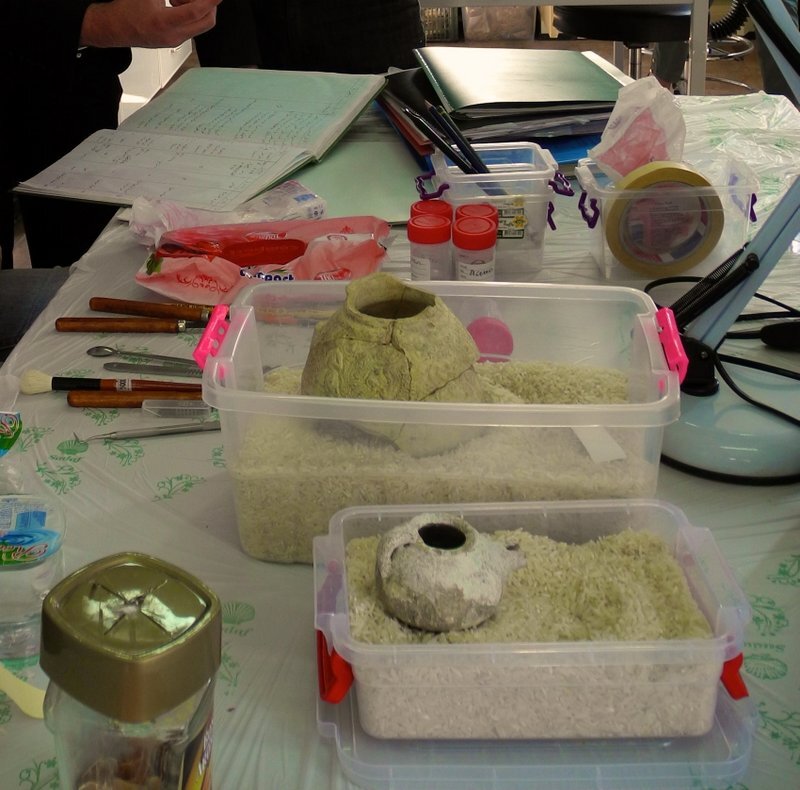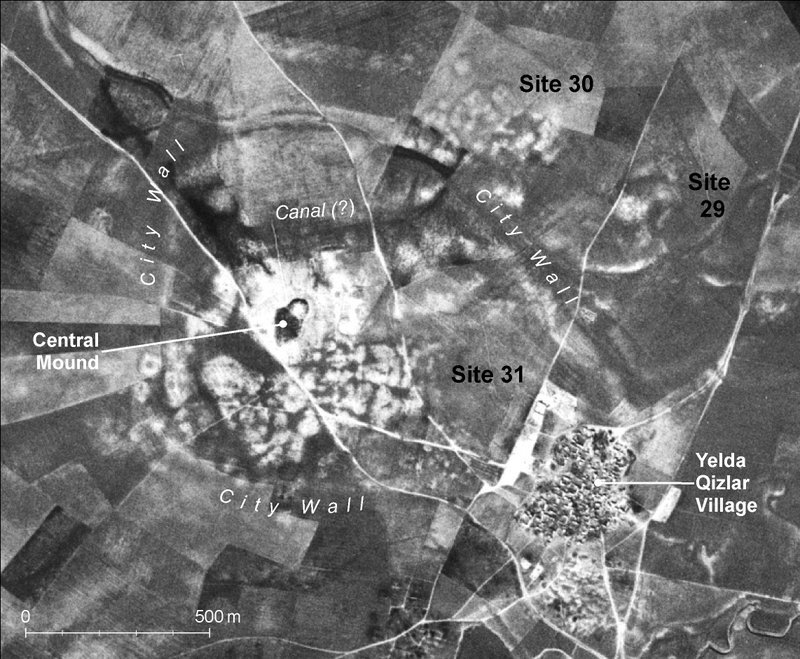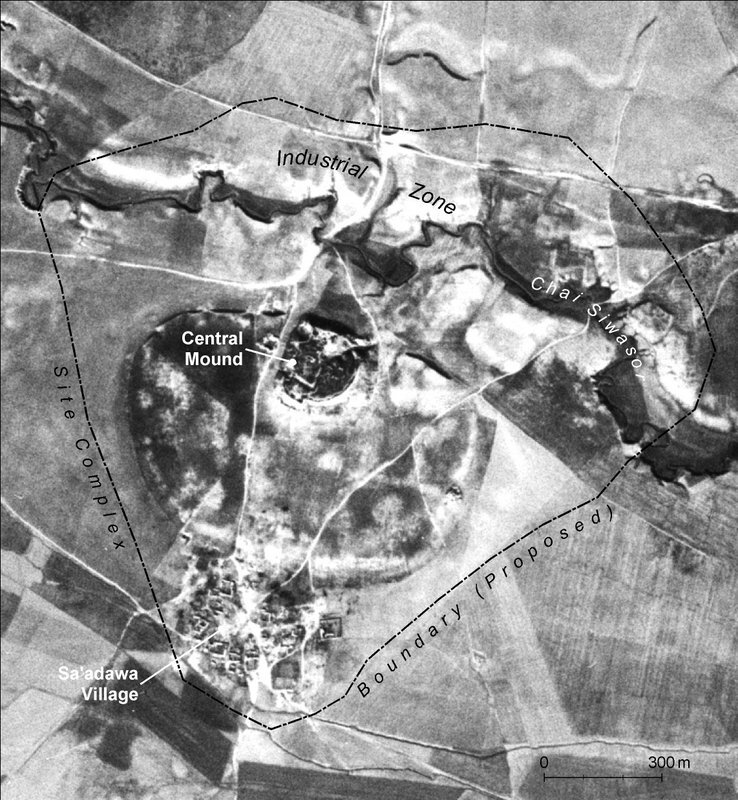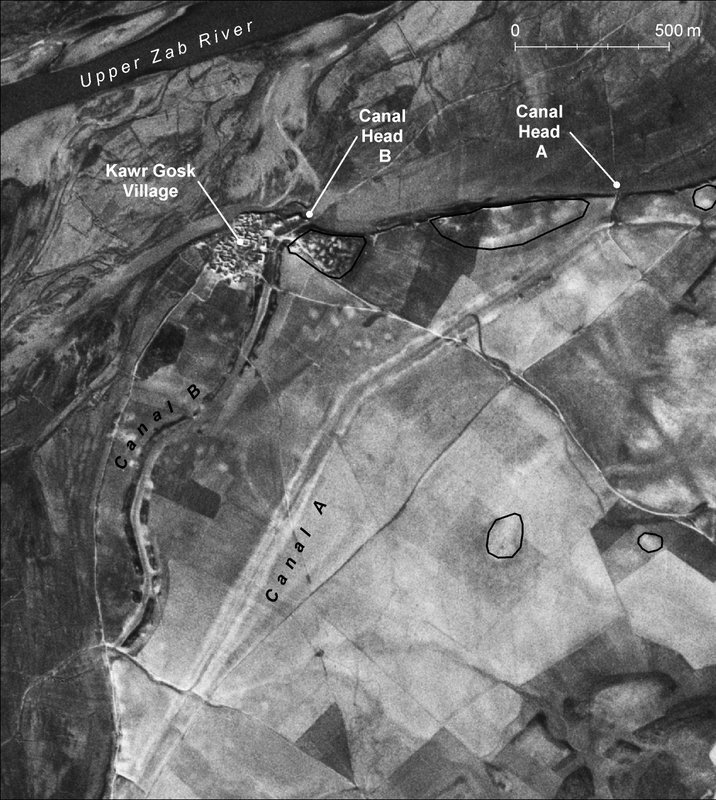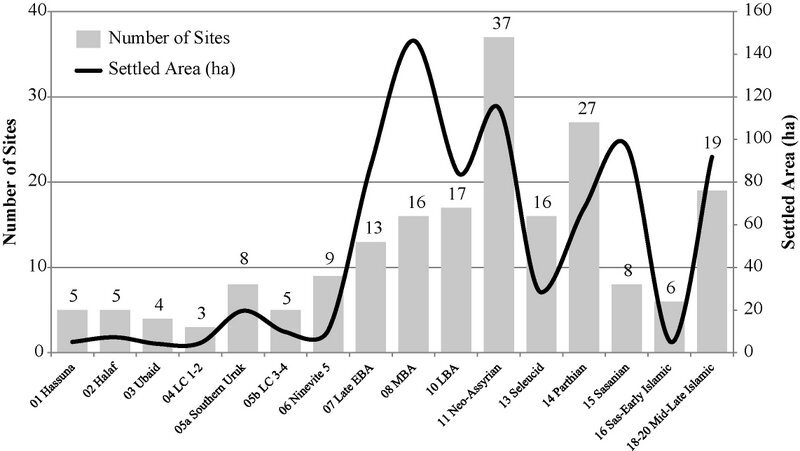Following his excavations at Babylon in the early 1800s, the French explorer and antiquarian Claudius Rich travelled north to Mosul and the Kurdistan region of present-day Iraq. Almost 3,000 years before Rich’s arrival, the region’s plains and foothills had been the center of the ancient Assyrian empire, and he was intent upon rediscovering its illustrious capital cities: Assur, Nineveh, Dur-Sharrukin (Khorsabad) and Kalhu (Nimrud). Like many of his contemporaries, Rich was spellbound by the history and culture of ancient Assyria, and had a particular interest in Nineveh, whose fiery destruction in 612 B.C. had been prophesized in the Old Testament by Nahum ‘the Elkoshite’. Indeed, under the auspices of the Ottoman Sultan, Rich spent much of the 1820s unearthing the ruins of the great North Palace at Nineveh built by King Ashurbanipal (r. 668–627 B.C.), returning only sporadically to Europe to showcase freshly-excavated seals, statues and stele.
Rich’s success inaugurated an archaeological ‘gold rush’ in Mosul and the Kurdistan region, and in the remaining years of the 19th Century, Dur-Sharrukin and Kalhu were also rediscovered and excavated. In 1843, Pierre Botta revealed the majestic residences and temples of Dur-Sharrukin, the city built by King Sargon II (r. 721–705 B.C.) Just two years later, Austen Henry Layard exposed the remains of highly decorated palaces and administrative buildings bearing the name of King Ashurnasirpal II (r. 721–705 B.C.), and identified them as part of the ancient city of Kalhu. Then finally, in the opening years of the 20th Century, Walter Andrae discovered the remains of the temples, palaces, and distinctive double walls of Assur, the original capital of the Assyrian dynasty.
To celebrate and publicise their achievements, Botta, Layard and Andrae transported many excavated objects to Europe and installed them in exhibitions in the British Museum and the Louvre. The luxurious displays intensified the public’s fascination with the aesthetic of Assyrian art and architecture, admired for its beautifully executed reliefs and monumental dimensions. On account of the scholars’ success it seemed certain that archaeological exploration would continue, and the world held its breath and waited to see what other ancient treasures archaeologists would unearth.
_________________________________________
Archaeology, politics and warfare
Sadly, archaeology has always been vulnerable to the whims of politics, and significant upheaval in the region resulted in the end of this ‘gold rush’. Over the next one hundred years archaeological investigation necessarily became opportunistic rather than inevitable. In the first half of the 20th Century, the World Wars relegated archaeology as a low priority (though there existed a hybrid breed of ‘diplomat-cum-archaeologist’, personified by T.E. Lawrence and Gertrude Bell) and completely reshaped the geopolitical landscape. The Ottoman Empire was destroyed, a new Middle East was created, binding Kurdistan to the doomed Kingdom of Iraq, which emerged only briefly before its British-installed king, Faisal II, was overthrown. Things were little better for Kurdish archaeology in the new Republic of Iraq, as President Saddam Hussein actively prohibited foreign archaeological investigation in Kurdistan and, with his Ba’athist government, incited a series of events that paralyzed the region. The Iran-Iraq War (1980–88) bankrupted Iraq, devastated Kurdistan, and catalyzed a refugee crisis of astonishing magnitude. In a move to boost Iraq’s diminishing post-war funds, Iraq’s invasion of Kuwait then provoked the Gulf War (1990–91), which crippled the economy even further and triggered Western intervention. Amidst such violence, archaeologists could only watch from afar, and wait for the chance to one day again explore Kurdistan’s tantalizingly rich archaeological landscape.
It took the region a further twenty years to recover from these events, and for the full force of the 1991 ‘No Fly Zone’ over Kurdistan to take effect. After the withdrawal of Saddam Hussein’s Ba’athist army from Kurdistan, Kurdish political parties eagerly filled the vacuum and created a ‘semi-autonomous’ state. Quietly at first, but with increasing confidence in recent years, Kurdistan has emerged as a safe haven, a ‘bubble’ in the midst of a region otherwise brimming with violence and repression. In response to this transition, a number of pioneering archaeological teams have begun on-site work, and their success has encouraged many others to follow. The steady influx of foreign practitioners has created a new, dynamic and multi-national archaeological community whose collaborative work with the Kurdistan Regional Government (KRG) has fostered a 21st Century archaeological ‘gold rush’ in Kurdistan………..
Excavations in Erbil
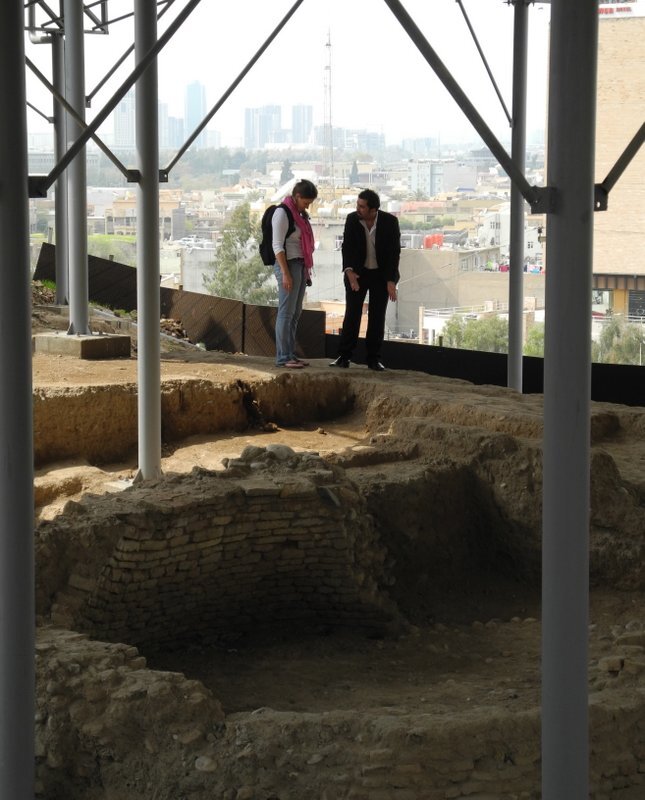 One team has been conducting excavations at the 32-meter high tell in the centre of Kurdistan’s capital city, Erbil (known as the ‘citadel’). Tells like these are a common feature of the Fertile Crescent, and their height is attributable to the continuous rebuilding of settlements in the same place, over an extended period of time. As such, tells can often offer information about society and culture over thousands of years, rather than during a single epoch. Indeed, according to popular rhetoric, Erbil citadel is the longest continuously inhabited city in the world, and preserves the stratified remains of over 8,000 years of settlement (c. 6,000 B.C.–present day). Ancient inscriptions and surface ceramics certainly suggest that the citadel has been a site of habitation since the Neolithic Ubaid period (c. 7,000–4,000 B.C.), but this is one of many questions the archaeologists seek to answer through excavation. Considering this ‘layer-cake’ treasure of ancient culture, over the past five years the KRG has been implementing the ‘Erbil Citadel Revitalization’ project, which includes archaeology as one of its main components. The excavations themselves are designed and directed by a collaborative team of archaeologists from the University of Cambridge and the Kurdish High Commission. Dr. Mary Shepperson, an archaeologist with the team, explains that since excavation began in 2013 they have discovered a 30-meter stretch of city wall below the north western edge of the citadel mound, along with decorated ceramics and other materials. Further scientific corroboration is needed before solid facts can be stated, but Dr. Shepperson hypothesizes that “there are at least six phases of rebuilding and repair, [and] the upper phase is certainly Ottoman.” There is little doubt in the minds of archaeologists that the city wall will be accompanied by even greater discoveries, because inscriptions from the 9th century B.C. record that Erbil citadel was an important religious center of the Assyrian empire, called Arba-Ilu (‘the Four Gods’). We also know that seven hundred years later, in 331 B.C., Erbil was the city to which Darius III fled after his defeat by Alexander the Great at the Battle of Gaugamela. Thus the historic significance of Erbil citadel led in June 2014 to its recognition by UNESCO as the first World Heritage Site in Kurdistan. The imposing visual grandeur of the citadel certainly supports this new title, as it is crowned with a distinctive perimeter ‘wall’ made up of adjoining 20th century Ottoman courtyard houses which tower over the modern city as a powerful symbol of this ancient region. (Pictured above: On the northern corner of the citadel, Mr. Sangar Mohammed Abdullah, archaeologist with the High Commission for Erbil Citadel, discusses the excavations with the author. Photo by Rebecca Bradshaw).
One team has been conducting excavations at the 32-meter high tell in the centre of Kurdistan’s capital city, Erbil (known as the ‘citadel’). Tells like these are a common feature of the Fertile Crescent, and their height is attributable to the continuous rebuilding of settlements in the same place, over an extended period of time. As such, tells can often offer information about society and culture over thousands of years, rather than during a single epoch. Indeed, according to popular rhetoric, Erbil citadel is the longest continuously inhabited city in the world, and preserves the stratified remains of over 8,000 years of settlement (c. 6,000 B.C.–present day). Ancient inscriptions and surface ceramics certainly suggest that the citadel has been a site of habitation since the Neolithic Ubaid period (c. 7,000–4,000 B.C.), but this is one of many questions the archaeologists seek to answer through excavation. Considering this ‘layer-cake’ treasure of ancient culture, over the past five years the KRG has been implementing the ‘Erbil Citadel Revitalization’ project, which includes archaeology as one of its main components. The excavations themselves are designed and directed by a collaborative team of archaeologists from the University of Cambridge and the Kurdish High Commission. Dr. Mary Shepperson, an archaeologist with the team, explains that since excavation began in 2013 they have discovered a 30-meter stretch of city wall below the north western edge of the citadel mound, along with decorated ceramics and other materials. Further scientific corroboration is needed before solid facts can be stated, but Dr. Shepperson hypothesizes that “there are at least six phases of rebuilding and repair, [and] the upper phase is certainly Ottoman.” There is little doubt in the minds of archaeologists that the city wall will be accompanied by even greater discoveries, because inscriptions from the 9th century B.C. record that Erbil citadel was an important religious center of the Assyrian empire, called Arba-Ilu (‘the Four Gods’). We also know that seven hundred years later, in 331 B.C., Erbil was the city to which Darius III fled after his defeat by Alexander the Great at the Battle of Gaugamela. Thus the historic significance of Erbil citadel led in June 2014 to its recognition by UNESCO as the first World Heritage Site in Kurdistan. The imposing visual grandeur of the citadel certainly supports this new title, as it is crowned with a distinctive perimeter ‘wall’ made up of adjoining 20th century Ottoman courtyard houses which tower over the modern city as a powerful symbol of this ancient region. (Pictured above: On the northern corner of the citadel, Mr. Sangar Mohammed Abdullah, archaeologist with the High Commission for Erbil Citadel, discusses the excavations with the author. Photo by Rebecca Bradshaw).
__________________________
Archaeological Office, Erbil Citadel. Two decorated Abbasid-period ceramics. March 2014. Photo by Rebecca Bradshaw
_____________________________
A series of surveys
Other archaeological teams are arriving in Kurdistan to conduct surveys and discover unidentified sites in Erbil and Duhok provinces. Departing from the dramatic palace- and temple-based archaeology practiced by their predecessors in the 19th and early 20th centuries, many 21st century archaeologists are pursuing the full spectrum of sites, regardless of their size. Harvard University archaeologist Prof. Jason Ur states that this is because many “parts of [Kurdistan] are important for the study of early civilizations, but were nearly completely unknown.” Prof. Ur is the director of the Erbil Plain Archaeological Survey (EPAS) and his research asks how different structures were distributed across the alluvial plains in Erbil province, and how space between rural and urban centres was used.
There are three other major survey teams active in Kurdistan: 1) UGZAR (Upper Greater Zab Archaeological Reconnaissance, Adam Mickiewicz University, Poland); 2) LoNRP (Land of Nineveh Regional Project, University of Udine, Italy); and 3) EHAS (Eastern Habur Archaeological Survey, University of Tübingen, Germany). Together with EPAS, these teams have united themselves theoretically and methodologically under the name, the “Assyrian Landscape Research Group” to enable data sharing and synthesis. The group uses remote sensing techniques in the form of declassified satellite images from NASA’s intelligence-gathering CORONA and ASTER programmes. These aerial images were once used by the US to detect other countries’ weapon-making capacities between 1959 and 1972. Today they allow these archaeological teams to trace ancient interventions in the landscape. Close examination of the photographs shows structures such as canals, tells, roads and reliefs, even before archaeologists arrive on site. “I could see thousands of sites, almost all unknown to archaeology, on my office computer”, recalls Prof. Ur. Image analysis is typically followed by on-the-ground topographical surveys, with the collection of surface ceramics and an evaluation of the sites’ suitability for excavation. Of course, the teams’ projects are not completely homogeneous; each has its own particular questions and aims. For example, UGZAR also investigates the famous rock reliefs at Gunduk, dating to the Early Dynastic III period (c. 2,600-2,350 B.C.); while LoNRP aims to understand how the hinterland around Nineveh was organised, and has already begun dove-tailing survey results with targeted excavations at nearby Tell Gomel.
___________________________
The walled Middle Bronze Age city at Kurd Qaburstan (EPAS Site 31), possible ancient Qabra. CORONA 1039-2088DA038, 28 February 1967. Courtesy Prof. Jason Ur
_________________________
The Late Bronze Age/Iron Age city at Qasr Shemamok (EPAS Site 2), ancient Kilizu. CORONA 1039-2088DA037, 28 February 1967. Courtesy Prof. Jason Ur
________________________
Canal heads on the Upper Zab near Kawr Gosk village. CORONA 1039- 2088DA036, 28 February 1967. Courtesy Prof. Jason Ur
________________________
The activities described here, alongside many others that constitute Kurdistan’s archaeological ‘gold rush’, have reintroduced the world to this remarkable region. The teams’ results reveal sites and spaces that were occupied across millennia and were able to withstand many regional wars and disasters. What has both shocked and delighted most archaeologists, however, is the density of sites that have been discovered. Dr. Rafal Kolinski notes that his UZGAR team has recorded over 100 new sites in the vicinity of the Greater Zab, some of which date to pre-Hassuna and Hassuna periods, thus “providing an overarching timespan of approximately ten thousand years of the settlement history of the area.” LoNRP’s two on-the-ground surveys revealed c. 800 new sites, in addition to the 500 they’d already identified from the CORONA images. EPAS’ preliminary image analyses revealed at least 1,200 new sites in their concession, while on-the-ground surveys showed around 100 new sites. Indeed, LoNRP director Dr. Daniele Morandi Bonacossi asserts that these areas of Kurdistan have “a settlement density of nearly one site per square kilometer, a much higher density than that observed in the adjacent regions of the Iraqi and Syrian Jezirah and southern Mesopotamia”. This result is quite extraordinary, and allows the archaeologists to expose trends in settlement and land use hitherto unknown. For example, Prof. Ur has compared the number of sites found dating to a particular period with the number of hectares of land covered by these sites. He found that during the Bronze Age (c. 3,300–1,100 B.C.), settlement density (the number of sites in existence) varied only slightly, but that average site size and the total area that was settled increased dramatically, pointing to a similarly dramatic rise in population figures. Results like these are rightly attracting attention from other archaeologists who wish to come and work in Kurdistan. According to Prof. Ur, they will be in good company, particularly as “the Directorate of Antiquities is welcoming and helpful, and [is] quickly growing to meet the challenges of the influx of archaeologists.”
____________________________
Preliminary histogram of settlements recovered in the 2012 EPAS field season. Gray bars are numbers of sites, read against the left vertical axis; black line is the total settled hectares (in ha, not including Erbil), read against the right vertical axis. Graphics: created by and courtesy of Prof. J. Ur
___________________________
An uneasy future?
After decades of anticipation, archaeologists are once again awing the global public with fresh evidence of the glory of ancient Mesopotamia. Kurds and Iraqis, as well as Westerners, are the new protagonists in the rediscovery of ancient Mesopotamia; the achievements of Rich, Botta, Layard and Andrae are now simply the first phase in the history of archaeology in this region. Despite the violent and ever-changing political landscape in Iraq, Kurdistan has been a relatively safe haven that encourages a new archaeological ‘gold rush’. But we can only hope, given the political instability in the Middle East and the shifting fortunes of conflict, that the revival is here to stay.
______________________________________
Photo image above, 5th from top, right: The author with Kurdish archaeologist Mr. Sangar Mohammed Abdullah, examining the most recent excavations at Erbil citadel. Photo credit: Rebecca E. Bradshaw.
___________________________________________________
Post-script: Will the rise of the ‘Islamic State’ in Iraq affect archaeology in Kurdistan?
As this article was being written (June 2014), the self-proclaimed ‘Islamic State’ (a group of Sunni Muslim fundamentalists, hereafter referred to as ‘IS’) successfully seized several key cities in Iraq, and firmly occupied territory on part of Kurdistan’s western border. Large numbers of people fled in the wake of the IS’ advance, including vulnerable non-Muslim communities of Christians and Yezidis. Many people were killed – civilians as well as fighters – and it became clear that the Iraqi and Kurdish governments were unable to adequately protect or support their civilians. Therefore, in early August, the United States began supplying the region with humanitarian aid. More recently, the IS’ appropriation of a strategic hydroelectric dam near Mosul and its continuing slaughter of local populations prompted the US to inaugurate a series of military strikes on IS artillery units. As this article went to press, the US were furnishing the Kurdish ‘Peshmerga’ army with weapons, and helped them to retake Mosul dam by providing ground offences with air support, while major European powers were seriously questioning the viability of their policy of non-intervention in the region.
Many people fear that the rapid escalation of the situation presents an increasingly serious challenge to Kurdistan’s status as a ‘safe haven’. However, observers on the ground are keen to reassure the international community that those living and working within Kurdistan are not under direct threat, because IS have not yet been able to extend their reach into Kurdistan itself. But with no decisive end to the conflict in sight, and an increasingly unpredictable situation, have archaeologists been forced to reconsider their fieldwork plans?
In conversation with several colleagues in late July, the word was that most teams were still planning to conduct their autumn seasons in Kurdistan. Some of those with archaeological concessions in close proximity of IS (for example those working in the Nineveh Plain), chose to shift their geographical focus to the north or east. Other archaeologists with concessions in the Zagros Mountains near Turkey and Iran seemed content to monitor the situation as it developed. And yet, as University of Pennsylvania archaeologist Darren Ashby notes, the security status of the physical location of a site is only part of the consideration: “The international airports are located in Erbil and Sulaymaniyah. Fighting in and around those cities would likely shut down their airports, which could cause us to cancel in spite of security where we actually work.” For Kurdish and Iraqi archaeologists, however, it is a very different situation, as they do not have the option to leave the region or cancel their fieldwork. Far from being sensationalist or reactionary, many practitioners have long-term experience conducting their projects in politically volatile regions, and are sensitive of the many factors (such as accessible escape routes and feasible evacuation plans) that need close attention.
But for several directors, the developments in early- to mid-August left them no option but to cancel their fieldwork. Prof. Jason Ur reluctantly cancelled his August-September season, whilst another archaeologist at the University of Pennsylvania, Steve Renette, also decided to postpone his field season until May 2015, stating that “we… feel that we should not draw resources from more important objectives, and that we might get in the way of efforts to help refugees and to defend the people of Iraqi Kurdistan.”
After a brief moment of peace and security, Iraq and Kurdistan are experiencing yet another wave of unimaginable violence, resulting in the tragic loss of thousands of human lives and the possible destruction of a remarkable and under-investigated archaeological heritage.

